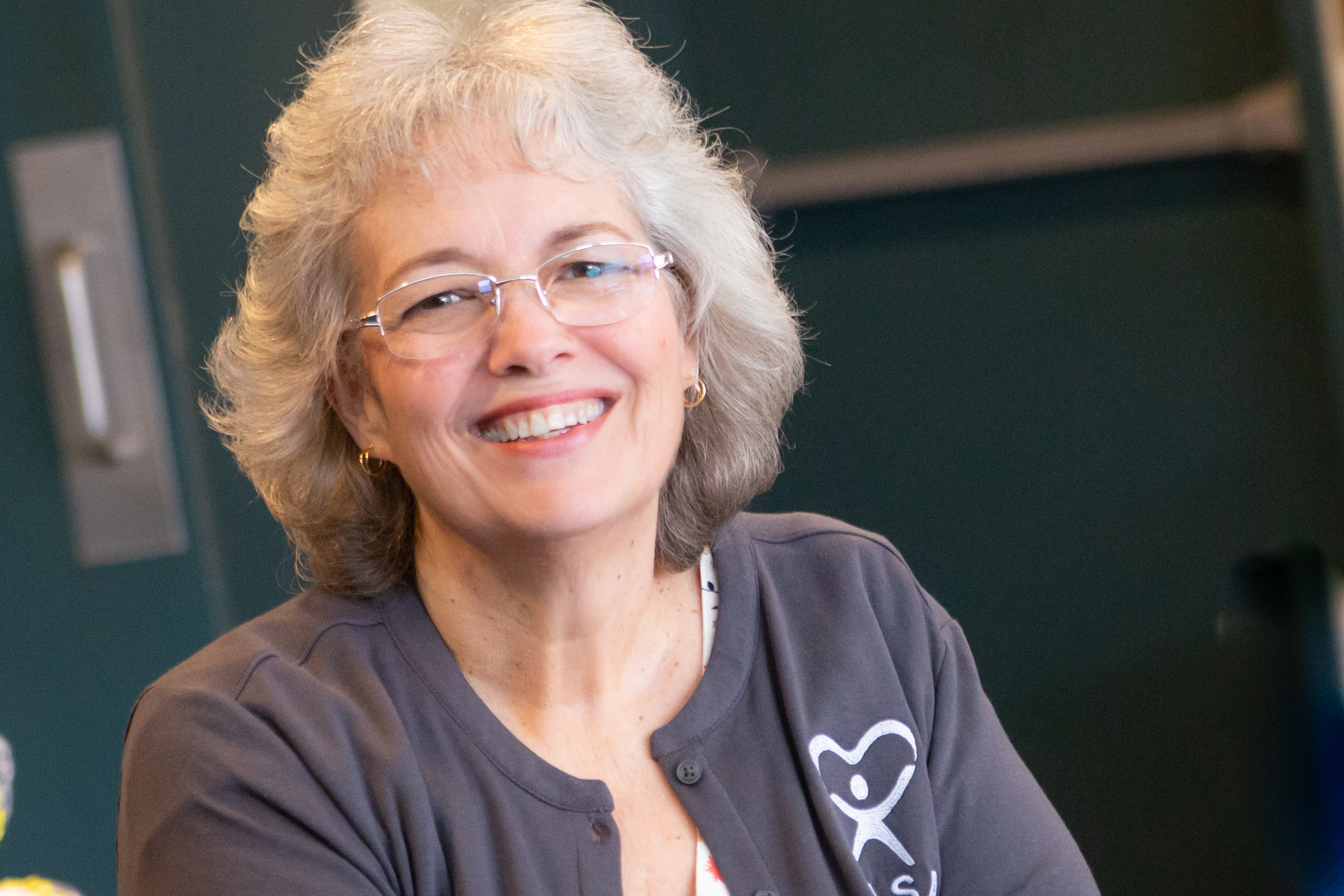
Lois Stehlik, a single mother of two girls, has come a long way from her hometown in Shreveport, Louisiana. As the youngest of four siblings, she lived in the same house all her life until she turned 21. She married a man in the military and traveled all over. Her first child, Jessica, was born in Guam, and daughter Amber was born in Arizona. Eventually, they ended up in Kansas, but her relationship with her husband had become too abusive, and when the violence turned to her children, Lois made the decision to pack up her kids, and she headed to Huntsville, Texas. She not only made a life locally for her and her family, but she makes numerous valuable contributions to our community through her work ethic and volunteerism.
It was a struggle, but I took multiple side jobs to be able to make ends meet. I would take jobs that would not require having to find a sitter. For example, I babysat children overnight for TDCJ night shift employees. I also sold Avon for a while.
I retired from TDCJ in 2017 after working in the accounting department for over 20 years.
On one particular day, they may be learning cardiovascular. The student doctors have to come in and examine us. They try to create a realistic setting, with at least 5 exam rooms down each side of a hallway. We are given instructions–where to sit, what ailment we have (like a stomachache), and who our character will be. We may have to represent a homeless person, and if this is the case, we have to dress accordingly. The goal is to make it as realistic as possible. It’s a lot of fun, but we have to stay in character. During the exercise, we are being videotaped, and there are people observing and critiquing us. The student doctors are taught to ask open-ended questions to obtain as much information as possible about the standardized patient’s ailments and complaints. For instance, if you have pink eye, you can’t fake pink eye. So, you have to go in there rubbing your eyes, and when student doctors look in your eyes, you hand him/her a card that describes your symptoms, or, in other words, what he/she should be able to see if you truly had pink eye.
Last summer, several of us participated in an ultrasound lab. The student doctors have to locate 7 organs: spleen, liver, kidneys, bladder, diaphragm, and the heart. I told them, “If you see something, say something!” It’s all on a screen, so we can watch it ourselves. I love this job! I feel like I am part of their education, and I get to know them. Right now, I believe there are 158 first year and 112 second year students in the program.
COM also has a simulation hospital, and the student doctors get to work with robotic mannequins. The child mannequin’s name is Hal. He can cry, scream, and move around. He can do it all! Sometimes, we are asked to be the parent, and we bring the child in with a concussion, or congestion, and we have to try to keep the baby calm. Faculty observe how the student doctors handle these situations.
During the cardiovascular examination, they have to find your ‘apex’. They’ll teach us what it is, where it is located, how it should feel when they check it. It is located underneath the left breast; so, if you’re a woman, the student doctor should ask you to lift your left breast. That’s a hard thing for them to say, especially if he’s a male and you’re a female. We try to encourage them to just say it.
Last year, I saw my optometrist, and was informed I had the beginnings of cataracts. Then, two weeks later, a student doctor was examining my eyes. When we finished the whole skit. I asked her, “Did you see something?” and she asked, “Do you have cataracts?” I said, “Yes, I do.” This was a good learning opportunity for her and for other student doctors in the room.
I also work with Mat Ministries at University Heights Baptist Church. Twelve to fifteen ladies get together to make mats for the homeless. We use ‘Plarn’ which is essentially, plastic yarn. It is crocheted into a 36 x 72-inch mat, then we roll them and take them to Bridge Ministry at University Heights Baptist Church. Every third Friday of each month, we take clothing, bedding, shoes, and the mats we make to a location in Houston to minister to the homeless people. These mats are a hot commodity because they are lightweight, and it keeps the person off the ground and dry. They are basically used as a bed.
I am also very involved with my church, University Heights Baptist Church. On Wednesdays, I volunteer to serve the Wednesday night meal, but primarily, working at Old Town Theatre takes most of my time. I started in 2018, and I am now a board member. I am partly responsible for booking acts, marketing, preparing for shows, welcoming both artists and patrons and cleanup. For a list of artists lined up for this year, or to get information about renting the facility, visit https://www.oldtowntheatre-huntsville.org/.
A special thanks to Lois for visiting with us and letting us get to know you a little better. And thanks for all you do for our community. You make some of us feel lazy!

Postcards Magazine
936-293-1188
PO Box 690
Huntsville, TX 77342
